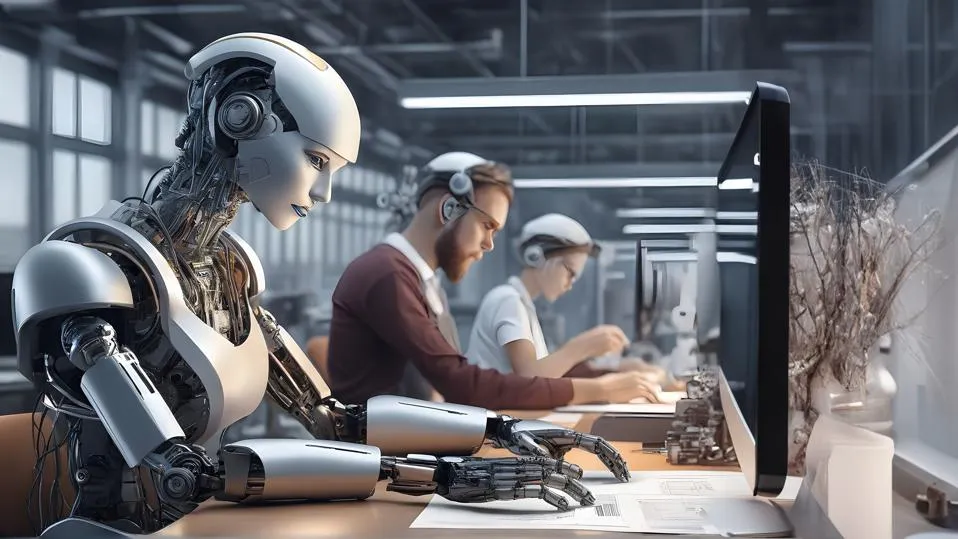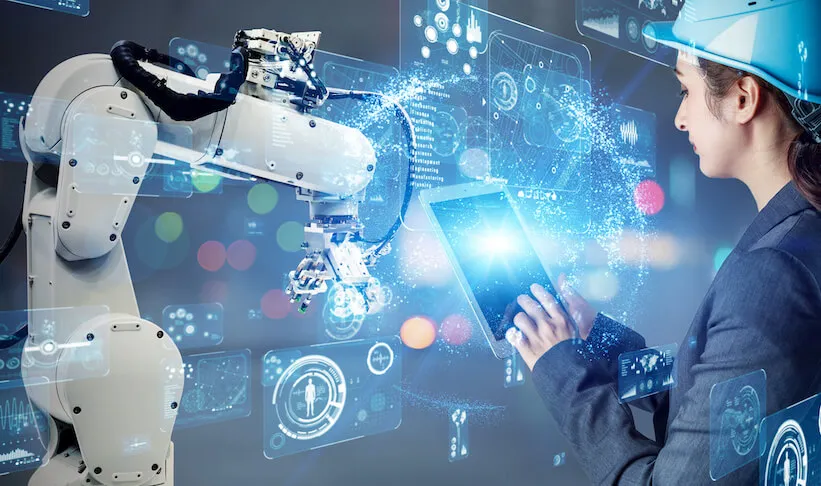Artificial Intelligence (AI) and robotics are no longer just buzzwords- they’re shaping the world we live in. From self-learning robots to intelligent assistants in our homes, the future of AI and robotics is growing rapidly. In 2025 and beyond, we’re set to witness groundbreaking developments that will redefine industries, education, and everyday life.
In this blog, we will explore the key trends driving the future of AI and robotics and what they mean for students, innovators, and curious minds.
Why the Future of AI and Robotics Matters Now
AI and robotics have moved far beyond the lab and science fiction. They now power self-driving cars, assist in surgeries, streamline warehouses, and even help create digital art. Therefore, understanding what’s next is essential for anyone interested in technology, innovation, or career development.
Top 6 Future AI and Robotics Trends to Watch in 2025 and Beyond
1. Human-Centered and Ethical Robotics in the Future of AI and Robotics
As AI becomes more autonomous, the need for ethical and explainable AI grows. In particular, future systems will be designed to prioritize transparency, fairness, and human well-being, especially in healthcare, hiring, and legal tech.
2. Robots That Learn Like Humans
Smarter robots capable of learning through experience are on the rise. Using reinforcement learning, neural networks, and advanced sensors, these machines will adapt quickly to new environments, making them ideal for disaster relief, caregiving, and education.

3. Generative AI Meets Physical Robotics
Generative AI tools such as ChatGPT will increasingly integrate with robots, enabling machines to understand and generate human-like communication in real-world settings. Imagine a robot that not only delivers medicine but also answers patient questions.
4. AI in Education and Skill-Building
AI tutors, adaptive learning systems, and hands-on robotics kits will revolutionize education. By combining AI with experiential learning, students will be empowered to build, test, and innovate from virtually anywhere.
5. Collaborative Robots (Cobots) in the Future of AI and Robotics Workplaces
Industries are adopting cobots-robots designed to work safely alongside humans-to boost efficiency in factories, warehouses, and even restaurants. In 2025, expect more user-friendly designs and AI that seamlessly adapts to human workflows.
6. Democratization of Robotics Innovation
Thanks to low-cost microcontrollers, open-source platforms, and DIY kits, robotics is becoming accessible to more people. Students, interns, and early-career innovators can now build real prototypes without million-dollar budgets- just like we do at Flomad.
Real-World Applications You’ll See Sooner Than You Think in the future of AI and Robotics

-
- Healthcare: Surgical robots, elderly care assistants, AI-powered diagnostics
-
- Education: Personalized learning, virtual lab assistants, smart grading
-
- Smart Cities: AI traffic control, robot delivery, energy-efficient systems
-
- Entertainment: AI-driven games, creative robotics, interactive installations
The future of AI and robotics is reshaping every part of society- and this momentum is only accelerating.
How Flomad Is Preparing the Next Generation for the Future of AI and Robotics?
At Flomad, we believe the future belongs to curious creators. That’s why we combine AI education, hands-on robotics, and real-world projects for students and interns around the globe. Whether you’re a beginner or an innovator, our goal is to empower you to shape the future through learning by doing.
Explore how you can get involved: https://flomad.international
Frequently Asked Questions (FAQ)
What is the future of AI and robotics?
The future of AI and robotics includes more human-like machines, ethical AI, personalized learning, smart automation, and broader accessibility to build and deploy robotic systems.
Will AI replace humans in the workplace?
AI will automate certain tasks, but it will also create new job roles focused on creativity, problem-solving, and AI system management. The focus will shift to human-AI collaboration.
How can students start learning about robotics and AI?
Begin with online courses, build beginner-friendly robotics kits, and explore internships or bootcamp like those offered by Flomad that combine experiential learning and mentorship.
What industries will be most impacted by AI and robotics?
Healthcare, manufacturing, education, transportation, and customer service will undergo major transformations due to AI and robotics integration.
Final Thoughts
The future of AI and robotics is not something to wait for; it’s already in motion. In summary, whether you’re a student, innovator, or educator, now is the time to explore, experiment, and engage with this fast-evolving field.
Stay curious. Stay building. The future is being shaped today.

